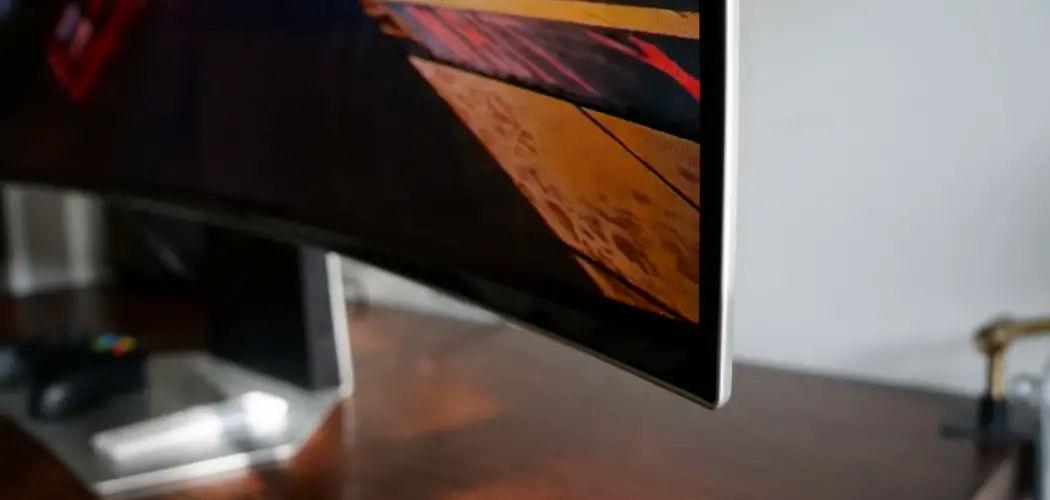Are you tired of having a cluttered and disorganized desk? Do you struggle to find space for all your office essentials? A 2-tier metal monitor stand is the solution you need.
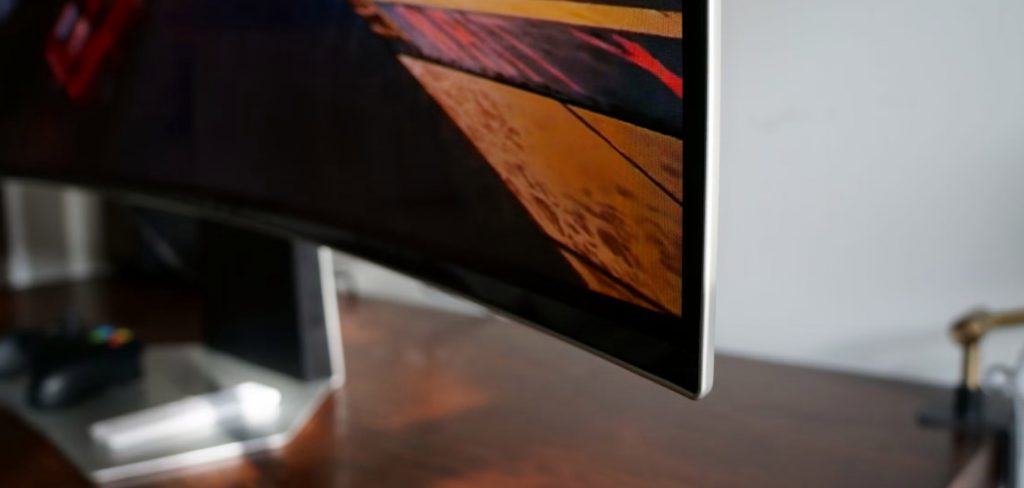
The 2 tier metal monitor stand is a practical and versatile accessory designed to enhance your workspace organization and improve ergonomics. Elevating your monitor to an optimal eye level helps reduce strain on your neck and shoulders, promoting better posture during long work or study hours. Additionally, its two-tier design provides ample storage space for organizing office supplies, documents, or even additional peripherals.
Whether you’re setting up a home office or upgrading your desk setup, learning how to use 2 tier metal monitor stand will help you fully harness its functionality and maximize your productivity.
What Are the Benefits of Using a 2-Tier Metal Monitor Stand?
Before we dive into the usage instructions, let’s first explore the benefits of using a 2 tier metal monitor stand.
- Improved Ergonomics: As mentioned earlier, elevating your monitor to an optimal eye level helps reduce strain on your neck and shoulders. This is especially important if you spend long hours on a computer screen. Using a 2 tier metal monitor stand, you can maintain good posture and prevent discomfort or long-term health issues.
- Extra Storage Space: The two-tier design of the monitor stand allows for efficient use of desk space by providing additional storage options. You can keep your office supplies, books, notebooks, or other items within reach while keeping your desk surface clear and organized.
- Better Airflow: Placing your monitor on a stand increases airflow around and underneath it, preventing overheating and potential damage to your device. This is particularly beneficial if you have a desktop computer that generates much heat.
- Stylish and Professional Look: A 2 tier metal monitor stand serves a functional purpose and adds a touch of style and professionalism to your workspace. It gives your desk setup a clean, modern look that can help boost your motivation and productivity.
These are just a few benefits of using a 2 tier metal monitor stand. Now, let’s move on to learning how to use it effectively.
What Will You Need?
To start using your 2 tier metal monitor stand, you will need the following items:
- A 2 tier metal monitor stand (of course!)
- Your computer monitor
- Additional peripherals (if desired)
- Desk space for setup
Once you have these items ready, you’re all set to begin.
10 Easy Steps on How to Use 2 Tier Metal Monitor Stand
Step 1. Unbox the Monitor Stand:
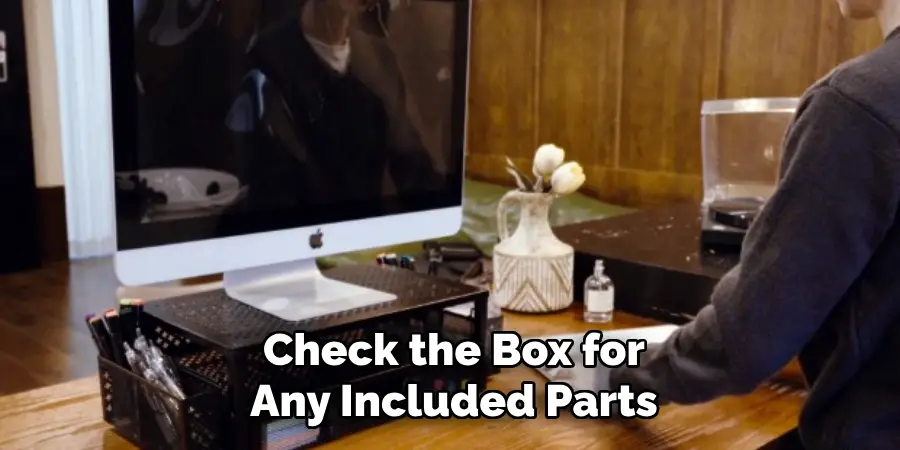
Carefully remove the monitor stand from its packaging, ensuring all components are accounted for. Check the box for any included parts, such as screws, assembly tools, or additional shelves. Lay everything out on a clean, flat surface so you can easily access each piece during the setup process. Inspect the stand for any signs of damage that may have occurred during shipping, and ensure it is clean and free of debris before proceeding. This step will help you avoid issues during assembly and guarantee that your monitor stand is ready for safe and efficient use.
Step 2. Choose a Suitable Location:
Select a flat, stable surface that can safely support the weight of the monitor stand and any equipment you plan to place on it. Ideally, this location should provide easy access to power outlets and other essential peripherals, such as cables or docking stations. Ensure the chosen spot has sufficient space to accommodate the stand without overcrowding your workspace.
Ensure that the area is free of clutter and potential distractions, as this will help to maintain an organized and efficient workstation. Additionally, consider ergonomic factors, like the monitor’s height and viewing angle, to reduce strain on your neck and back, ensuring long-term comfort during use. Planning your stand’s placement carefully improves functionality and comfort in your workstation setup.
Step 3. Place the Stand on Your Desk:
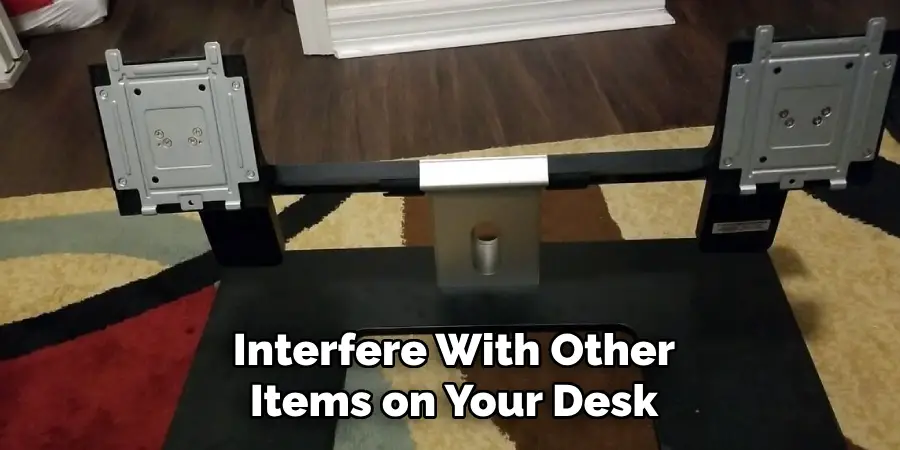
Carefully position the monitor stand on your desk, ensuring it is centered and balanced. Take note of the stand’s footprint to verify that it doesn’t interfere with other items on your desk, such as a keyboard, mouse, or additional accessories. If your desk has adjustable components, like a keyboard tray or shelves, ensure the stand doesn’t obstruct their movement or usability. Double-check that the stand is securely placed and its base lies flat against the desk surface without wobbling or instability.
This stability is crucial to prevent any accidents or damage to your equipment during use. Before proceeding, confirm enough clearance around the monitor stand for air circulation, which helps with cooling electronic devices and allows easy access for adjustments or cable management. An adequately positioned stand lays the foundation for an efficient, safe, and ergonomically sound workstation.
Step 4. Position Your Monitor:
Positioning your monitor correctly is vital to ensure comfort and reduce the risk of strain during prolonged use. Start by aligning the monitor so that the top of the screen is at or slightly below eye level. This alignment helps to maintain a natural and neutral neck posture, minimizing the likelihood of neck or shoulder discomfort.
The monitor should also be placed directly in front of you at an arm’s length distance – approximately 20 to 30 inches – to reduce eye strain while providing clear visibility of the screen. If you use multiple monitors, arrange them in a semi-circle formation to minimize head turning and maintain a comfortable viewing angle.
Step 5. Adjust Your Chair Height:
Adjusting your chair height is crucial for maintaining good posture and ensuring ergonomic comfort. Begin by positioning your chair so your feet rest flat on the floor, with your knees bent at a 90-degree angle. The chair’s seat height should allow your thighs to remain parallel to the ground, providing even weight distribution. Additionally, ensure your arms can relax comfortably at your sides, with your elbows naturally bent to a 90-degree angle when your hands are placed on the keyboard or desk. This setup helps reduce strain on your lower back, shoulders, and wrists, contributing to a healthier and more productive workspace.
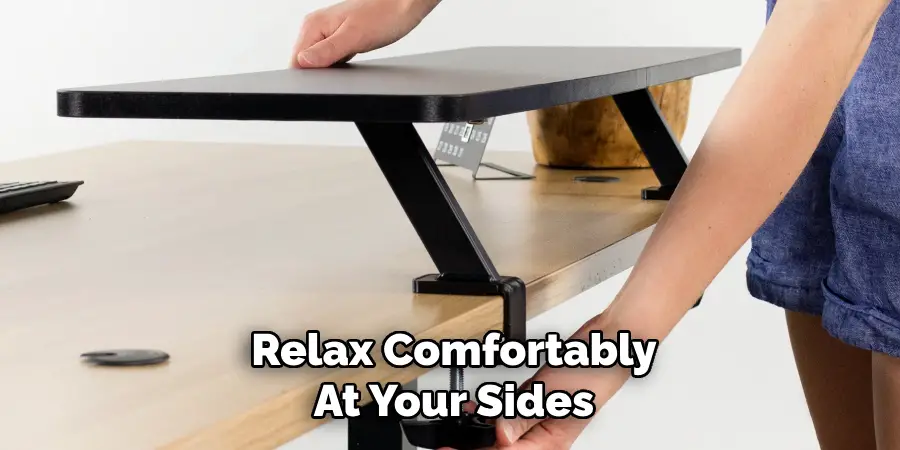
Step 6. Position Your Keyboard and Mouse
Proper keyboard and mouse placement is essential for reducing strain and maintaining a neutral posture. Position the keyboard directly in front of you, with the keys aligned to the center of your body. Ensure your wrists remain straight, and consider using a wrist rest to prevent awkward angles. Place the mouse close to the keyboard, allowing you to reach it easily without overstretching. Keep your elbows at a 90-degree angle, and your shoulders relaxed as you operate the mouse. This arrangement minimizes wrist and arm discomfort, promoting a more ergonomic and efficient workspace.
Step 7. Adjust Your Monitor Height and Distance
To prevent neck strain and improve comfort, it’s essential to position your monitor at the correct height and distance. The top of the screen should be at or slightly below eye level, ensuring your gaze naturally lands near the center of the screen. Place the monitor about an arm’s length away for optimal viewing. Adjust the tilt of the screen to reduce glare and ensure clarity. This setup supports better posture by keeping your head and neck aligned, reducing the risk of discomfort during extended periods of screen use.
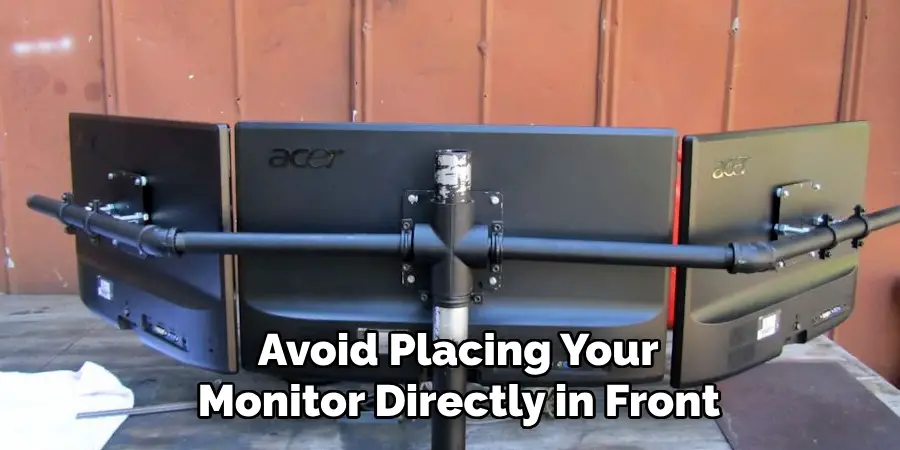
Step 8. Ensure Proper Lighting
Proper lighting reduces eye strain and maintains a comfortable working environment. Position your workspace to take advantage of natural light, but avoid placing your monitor directly in front of or behind windows to minimize glare. Use adjustable task lighting to illuminate your desk area without creating shadows or harsh contrasts. Additionally, consider using curtains or blinds to control the intensity of natural light throughout the day. A well-lit workspace not only enhances comfort but also boosts overall productivity.
Step 9. Take Regular Breaks
Taking regular breaks is essential for maintaining focus and reducing physical strain. Follow the 20-20-20 rule to minimize eye strain—every 20 minutes, look at something 20 feet away for at least 20 seconds. Stand up, stretch your body, and walk around periodically to improve circulation and avoid stiffness. Short breaks also help refresh your mind, allowing you to return to tasks with renewed energy and concentration. Incorporating regular breaks into your routine can greatly enhance your productivity and well-being.
Step 10. Keep Your Workspace Organized
Maintaining an organized workspace is crucial for efficiency and reducing stress. Keep frequently used items within easy reach to avoid unnecessary movement and clutter. Use storage solutions like shelves, drawers, or baskets to manage paperwork and supplies systematically. Labeling containers and tidying up at the end of the day can help you stay on top of the organization. A clean and orderly environment fosters clarity of mind and keeps you focused on your tasks.
Following these steps, you can create an ergonomic workstation that promotes comfort, productivity, and overall well-being.
Conclusion
How to use 2 tier metal monitor stand effectively can significantly enhance your workspace ergonomics and organization.
Start by placing your monitor on the upper tier at eye level to reduce neck strain and encourage proper posture. Use the lower tier for additional items such as a laptop, keyboard, or stationery to keep your desk clutter-free. Ensure the stand is positioned in a stable location on your desk to avoid accidents or instability.
By utilizing both tiers efficiently, you can maximize space, streamline your work area, and create a comfortable environment that supports productivity and well-being.

